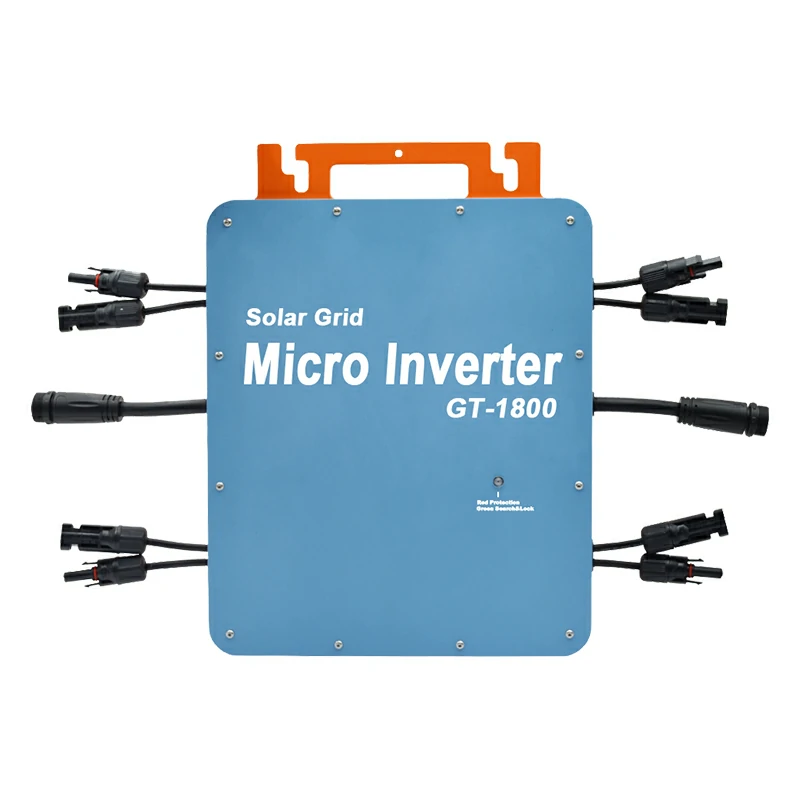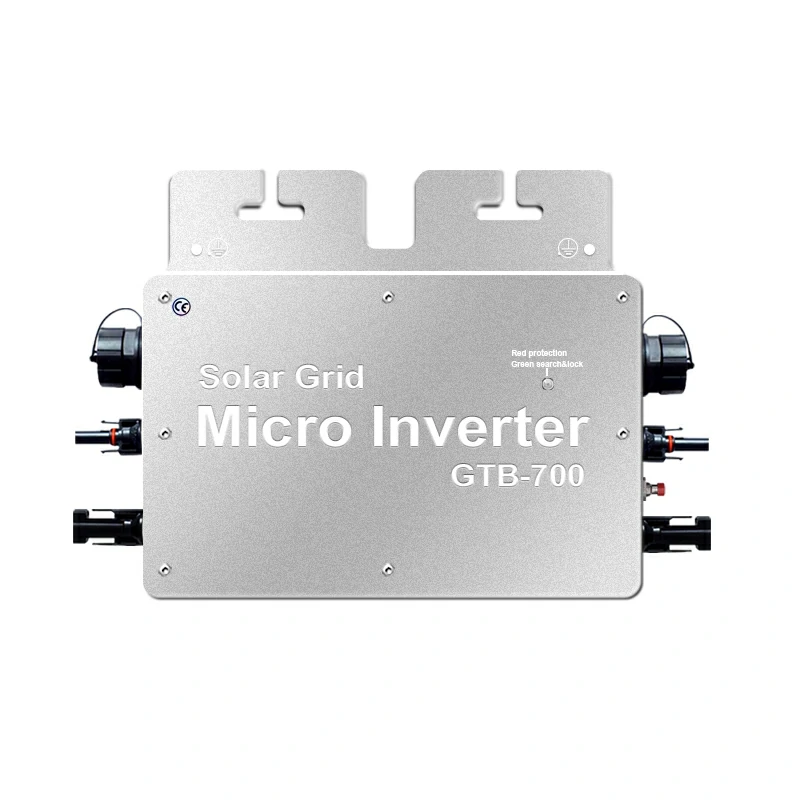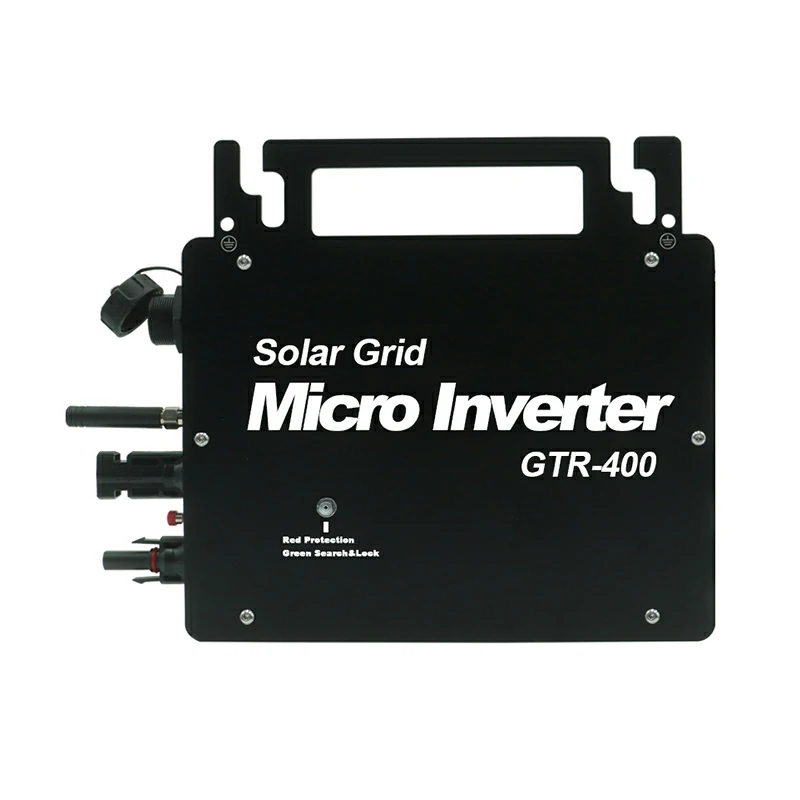I. Introduction
In the rapidly evolving world of solar energy, Micro Inverters have become a crucial component for maximizing the efficiency of photovoltaic systems. As a potential buyer of Grid-Connected Inverters, understanding the differences between 1-in-1 and 4-in-1 Micro Inverters is essential for making an informed decision. This article aims to provide a comprehensive comparison of these two types of inverters, helping you choose the best option for your solar energy needs.

II. Overview of 1-in-1 Micro Inverters
Definition and Basic Functionality
A 1-in-1 Micro Inverter, also known as a single-module Micro Inverter, is a small Grid-Connected Inverter designed to work with a single solar panel. It converts the direct current (DC) generated by the panel into alternating current (AC) that can be used in homes or fed into the power grid.
Key Features
- Individual panel optimization
- Panel-level monitoring
- Easy scalability
- Enhanced safety with low-voltage DC
Typical Applications
1-in-1 Micro Inverters are commonly used in residential solar installations, small commercial projects, and systems where panels may be subject to partial shading or different orientations.
III. Overview of 4-in-1 Micro Inverters
Definition and Basic Functionality
A 4-in-1 Micro Inverter is a more recent innovation in the Grid-Connected Inverters market. It’s designed to connect to four solar panels simultaneously, converting DC to AC for each panel individually.
Key Features
- Reduced number of inverter units per system
- Lower installation costs
- Integrated monitoring for four panels
- Improved power density
Typical Applications
4-in-1 Micro Inverters are ideal for larger residential installations, commercial projects, and solar farms where multiple panels are grouped together in similar conditions.
IV. Comparison of Key Aspects
Installation Process and Complexity
1-in-1 Micro Inverters are relatively straightforward to install, with each inverter mounted directly behind its corresponding solar panel. This simplicity makes them a popular choice for DIY installations and smaller projects. In contrast, 4-in-1 Micro Inverters, while reducing the number of units required, may involve a more complex installation process due to the need for precise wiring and configuration of multiple panels to a single inverter unit.
Efficiency and Performance
Both types of Micro Inverters offer high efficiency by optimizing the performance of individual panels. However, 4-in-1 Micro Inverters can sometimes achieve slightly higher overall system efficiency due to reduced power losses in wiring and fewer conversion steps. This makes them an attractive option for larger systems where maximizing energy harvest is critical.
Monitoring and Management Capabilities
1-in-1 Micro Inverters provide detailed panel-level monitoring, allowing users to track the performance of each panel individually. This granular data can be invaluable for diagnosing issues and optimizing system performance. 4-in-1 Micro Inverters also offer panel-level monitoring but consolidate the data from four panels into a single interface, potentially simplifying management for larger systems.
Scalability and Flexibility
1-in-1 Micro Inverters excel in scalability and flexibility, allowing users to easily expand their solar array by adding more panels and inverters as needed. This modular approach is particularly beneficial for residential users who may want to start small and gradually increase their system size. 4-in-1 Micro Inverters, while still scalable, require planning to ensure that additional panels can be grouped in sets of four, which may limit flexibility in some scenarios.
Maintenance and Reliability
Both types of Micro Inverters are designed for durability and long-term reliability. However, 4-in-1 Micro Inverters have fewer units to maintain, which can simplify maintenance and reduce potential points of failure. On the other hand, if a 4-in-1 unit fails, it can affect the performance of four panels, whereas a single 1-in-1 inverter failure only impacts one panel.
Cost Considerations
Cost is a significant factor for many buyers. 1-in-1 Micro Inverters typically have a higher per-unit cost but may result in lower overall system costs for smaller installations due to their simplicity and ease of installation. 4-in-1 Micro Inverters, while potentially more expensive upfront, can offer cost savings in larger systems through reduced installation labor and fewer total units required.
V. Pros and Cons
Advantages and Disadvantages of 1-in-1 Micro Inverters
Advantages
- Individual panel optimization
- Easy to install and expand
- Detailed panel-level monitoring
- Enhanced safety with low-voltage DC
Disadvantages
- Higher per-unit cost
- More units to install and maintain
Advantages and Disadvantages of 4-in-1 Micro Inverters
Advantages
- Reduced number of inverter units
- Lower installation costs
- Consolidated monitoring for multiple panels
- Improved power density
Disadvantages
- More complex installation
- Potentially higher upfront cost
- Less flexibility in panel grouping
VI. Factors to Consider When Choosing
System Size and Design
Consider the size and design of your solar system. For smaller, residential systems, 1-in-1 Micro Inverters may offer the best balance of cost and flexibility. For larger installations, 4-in-1 Micro Inverters could provide efficiency and cost advantages.
Budget Constraints
Evaluate your budget constraints. If initial costs are a primary concern, 1-in-1 Micro Inverters might be more affordable for smaller projects. For larger systems, the long-term savings of 4-in-1 Micro Inverters could justify the higher upfront investment.
Specific Site Conditions
Assess the specific conditions of your installation site. If your panels will experience partial shading or varied orientations, 1-in-1 Micro Inverters can optimize each panel’s performance individually. For uniform conditions, 4-in-1 Micro Inverters might be more efficient.
Future Expansion Plans
Think about your future expansion plans. If you anticipate gradually expanding your system, 1-in-1 Micro Inverters offer more flexibility. For a one-time large installation, 4-in-1 Micro Inverters could be more cost-effective.
Warranty and Support
Check the warranty and support offered by the Grid-Connected Inverters manufacturer. Reliable support and a robust warranty can provide peace of mind and protect your investment.
VII. Case Studies or Real-world Examples
Success Story with 1-in-1 Micro Inverters
A residential user in a shaded area installed a 5 kW system using 1-in-1 Micro Inverters. The individual panel optimization allowed them to maximize energy production despite shading issues, resulting in a 20% increase in overall efficiency compared to a string inverter system.
Success Story with 4-in-1 Micro Inverters
A commercial solar farm opted for 4-in-1 Micro Inverters for their 100 kW installation. The reduced number of inverter units and lower installation costs led to significant savings. The consolidated monitoring system simplified management, and the farm reported a 15% reduction in maintenance costs.
VIII. Future Trends in Micro Inverter Technology
Emerging Technologies
The Micro Inverter market is continuously evolving, with advancements such as integrated energy storage solutions, improved grid interaction capabilities, and enhanced AI-driven monitoring systems. These innovations promise to further increase efficiency and reliability.
Potential Improvements
Future improvements may include higher power ratings for individual inverters, better thermal management, and more robust communication protocols. These enhancements will likely make Micro Inverters even more attractive for a wide range of applications.
IX. Conclusion
Recap of Key Differences
In summary, 1-in-1 Micro Inverters offer individual panel optimization, ease of installation, and flexibility, making them ideal for smaller, residential systems. 4-in-1 Micro Inverters provide cost savings, reduced installation complexity, and improved efficiency for larger installations.
Importance of Informed Decision-Making
Choosing the right Micro Inverter depends on various factors, including system size, budget, site conditions, and future plans. By understanding the key differences and considering your specific needs, you can make an informed decision that maximizes the benefits of your solar energy system.
Final Recommendations
For residential users or smaller projects, 1-in-1 Micro Inverters may be the best choice. For larger installations or commercial projects, 4-in-1 Micro Inverters could offer significant advantages. Always consult with a reputable Grid-Connected Inverters manufacturer to ensure you select the best solution for your needs.




